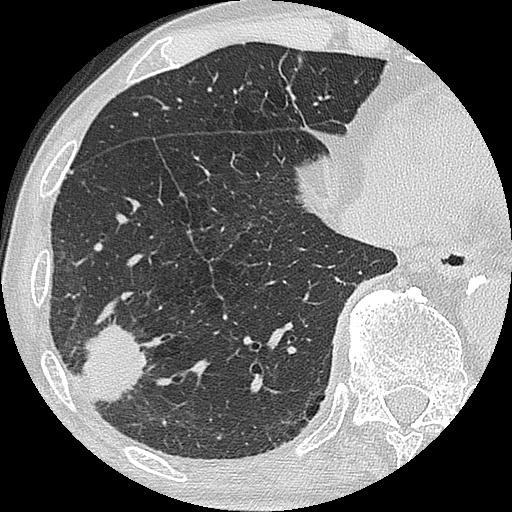Playlist
Show Playlist
Hide Playlist
Paraneoplastic, Neoplastic, and Paraproteinemic Polyneuropathy
-
Slides Other Non-inflammatory Neuropathies.pdf
-
Download Lecture Overview
00:00 <b>Now let's talk about some</b> <b>of the paraneoplastic</b> <b>or paraproteinemic neuropathies.</b> <b>We see two broad</b> <b>categories of cancer</b> <b>or cancer-associated conditions</b> <b>that can cause neuropathy.</b> <b>The first are the</b> <b>paraproteinemias.</b> <b>These are disorders</b> <b>like multiple myeloma,</b> <b>monoclonal gammopathy of</b> <b>undetermined significance,</b> <b>Waldenstrom's macroglobulinemia,</b> <b>and lymphoid or lymphomatous neuropathy</b> <b>and that is infiltration of the nerves</b> <b>from lymphoma or neurolymphomatosis.</b> <b>In addition,</b> <b>we can see paraneoplastic etiologies</b> <b>where there is an underlying cancer</b> <b>that is revved up the immune system</b> <b>and the immune system</b> <b>is attacking the nerves.</b> <b>And the most common and classic</b> <b>presentation is anti-Hu antibody syndrome,</b> <b>which presents with a prominent</b> <b>sensory ganglionopathy.</b> <b>Let's talk about a couple</b> <b>of these conditions</b> <b>and start with anti-Hu</b> <b>antibody polyneuropathy.</b> <b>This is a sensory</b> <b>predominant polyneuropathy</b> <b>associated with systemic</b> <b>anti-Hu antibodies,</b> <b>and it results in a</b> <b>sensory ganglionapathy.</b> <b>Patients have predominant</b> <b>sensory symptoms</b> <b>in the absence of</b> <b>motor symptoms.</b> <b>Importantly, the sensory afferents</b> <b>are important in the reflex arc.</b> <b>So we do see reduced or</b> <b>absent deep tendon reflexes</b> <b>with a predominance of sensory</b> <b>abnormalities with normal motor strength.</b> <b>Some important presentations of</b> <b>anti-Hu antibody polyneuropathy</b> <b>include a pure sensory</b> <b>ganglionopathy,</b> <b>this is associated with</b> <b>small cell lung cancer,</b> <b>somewhere around 25% of patients</b> <b>with small cell lung cancer</b> <b>will develop anti-Hu antibodies,</b> <b>and in a subset of those patients</b> <b>they will become pathologic</b> <b>and result in damage to the sensory</b> <b>ganglion the dorsal root ganglion,</b> <b>presenting with prominent</b> <b>vibration proprioception</b> <b>and in some cases pain and</b> <b>temperature dysfunction</b> <b>as well as light touch a</b> <b>sensory ganglionopathy.</b> <b>The second presentation is a</b> <b>sensorimotor polyneuropathy.</b> <b>Patients have sensory predominance</b> <b>but there is associated motor findings</b> <b>on EMG nerve conduction</b> <b>study or on clinical exam.</b> <b>And then the last,</b> <b>we can see a sensory ataxic neuropathy</b> <b>where patients have</b> <b>severe proprioceptive loss</b> <b>to the point that there is</b> <b>prominent sensory ataxia.</b> <b>They do not know where</b> <b>their fingers are in space,</b> <b>a sensory choreoathetosis, where the</b> <b>fingers will move on their own can occur</b> <b>and significant</b> <b>difficulty with dysmetria</b> <b>and coordination of both the appendicular</b> <b>function and truncal coordination.</b> <b>To make a diagnosis of anti-Hu</b> <b>antibody polyneuropathy</b> <b>and other paraneoplastic</b> <b>polyneuropathies,</b> <b>the LP is critically important.</b> <b>We're looking for</b> <b>evidence of inflammation,</b> <b>elevated protein often with</b> <b>normal cell counts no pleocytosis.</b> <b>And we do antibody testing looking</b> <b>for those paraneoplastic antibodies,</b> <b>including the anti-Hu antibody.</b> <b>To look for</b> <b>paraneoplastic antibodies,</b> <b>we often start our diagnostic</b> <b>investigation in the serum.</b> <b>These are antibodies,</b> <b>they circulate around in the serum</b> <b>before gaining</b> <b>access to the nerve,</b> <b>the spinal fluid or other</b> <b>parts of the nervous system.</b> <b>But we can do CSF testing, particularly</b> <b>when serum testing is negative.</b> <b>And the presence in the CSF</b> <b>of a paraneoplastic antibody</b> <b>is essentially diagnostic of an</b> <b>underlying pathologic process.</b> <b>When we treat these patients,</b> <b>we're managing the immune system.</b> <b>So there's two parts in managing</b> <b>a paraneoplastic process.</b> <b>The first is to treat</b> <b>the underlying cancer,</b> <b>that's the nidus for revving</b> <b>up the immune system,</b> <b>the activation of</b> <b>the immune system.</b> <b>And by treating the cancer, we remove</b> <b>that stimulus of the immune system.</b> <b>While patients are undergoing cancer</b> <b>treatment or at the initial presentation</b> <b>or in patients where the</b> <b>cancer is unable to be treated.</b> <b>We think about immunomodulating</b> <b>therapy suppressing the immune system</b> <b>so that the immune response and</b> <b>attack on the nerves is subsided.</b> <b>IV steroids methylprednisolone as</b> <b>well as IVIG and plasmapheresis</b> <b>can be used in those settings.</b> <b>Now let's talk about some of the</b> <b>paraproteinemic polyneuropathies.</b> <b>These are polyneuropathies occurring</b> <b>in patients with a paraproteinemia.</b> <b>We see neuropathy with an increased M-spike</b> <b>or an increased in a monoclonal paraprotein</b> <b>that can occur in multiple myeloma</b> <b>which is a plasma cell disorder</b> <b>with monoclonal gammopathy</b> <b>of undetermined significance,</b> <b>or Waldenstrom's</b> <b>macroglobulinemia.</b> <b>In these patients, we're looking for</b> <b>an elevation in a pair of protein</b> <b>or an M-spike either</b> <b>in the blood or urine,</b> <b>which would warrant further hematologic</b> <b>evaluation in these patients.</b> <b>Neuropathy is a common</b> <b>presenting symptom.</b> <b>And so sometimes neuropathy is the first</b> <b>sign of an underlying paraproteinemia</b> <b>that would require further evaluation</b> <b>and potentially management.</b> <b>The etiology and pathophysiology</b> <b>of the paraproteinemic</b> <b>neuropathies is increased protein.</b> <b>As a result of this</b> <b>increase in immunoglobulins,</b> <b>which is composed of a</b> <b>heavy and light chain,</b> <b>we see increased protein</b> <b>circulating in the blood.</b> <b>This can cause deposition in small vascular</b> <b>beds, we can see kidney dysfunction,</b> <b>as well as deposition of</b> <b>proteins in the nervorum,</b> <b>the small vascular</b> <b>beds around the nerve,</b> <b>and this can result in</b> <b>neuropathy in these patients.</b> <b>Though a differential diagnosis</b> <b>for a paraproteinemic neuropathy</b> <b>includes POEMS:</b> <b>Polyneuropathy, Endocrinopathy,</b> <b>Ophthalmoplegia,</b> <b>M-spike and skin findings,</b> <b>that's a patient with</b> <b>neuropathy with an M-spike.</b> <b>But the presence of these other organ</b> <b>involvements would point towards POEMS,</b> <b>as opposed to an underlying</b> <b>multiple myeloma or MGUS.</b> <b>Neuropathy with</b> <b>M-spike can be seen.</b> <b>Lymphomatous neuropathy</b> <b>is a neuropathic condition</b> <b>where we can see an M-spike and</b> <b>maybe similar to Waldenstrom's</b> <b>as well as amyloid</b> <b>neuropathy, cryoglobulinemia.</b> <b>These are all conditions</b> <b>where patients present</b> <b>with neuropathy in</b> <b>association with M-spike</b> <b>and our diagnostic work up should</b> <b>include evaluation of these conditions.</b>
About the Lecture
The lecture Paraneoplastic, Neoplastic, and Paraproteinemic Polyneuropathy by Roy Strowd, MD is from the course Other Non-inflammatory Neuropathies.
Included Quiz Questions
Which of the following laboratory findings would be consistent with a paraneoplastic polyneuropathy?
- Anti-Hu antibodies in the CSF
- Numerous WBCs in the CSF
- M spike in the urine
- M spike in the blood
- Glucosuria
Which finding is most likely to be seen with a polyneuropathy associated with small cell lung cancer?
- Prominent vibration and proprioception dysfunction
- Prominent sensory ataxia
- Ascending flaccid paralysis
- Prominent motor dysfunction with multifocal sensory loss
- Unilateral upper extremity sensory loss
Which of the following conditions is most likely to cause polyneuropathy associated with a serum M spike?
- Amyloidosis
- Diabetes mellitus
- HIV
- Cirrhosis
- Campylobacter infection
Customer reviews
5,0 of 5 stars
| 5 Stars |
|
5 |
| 4 Stars |
|
0 |
| 3 Stars |
|
0 |
| 2 Stars |
|
0 |
| 1 Star |
|
0 |




